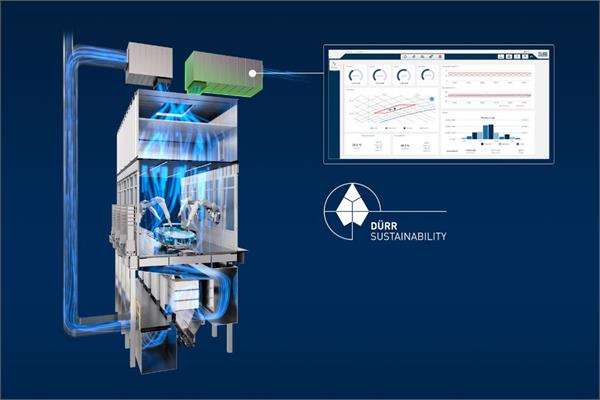
The newly developed software module from Dürr is significantly reducing energy consumption in automotive paint shops by enhancing the flexibility and responsiveness of temperature and humidity control systems. This latest innovation offers a sustainable and cost-effective solution for paint shop operators looking to optimise efficiency and reduce environmental impact.
Dürr’s Advanced Analytics Smart AC module, part of its DXQ software suite, enables more efficient regulation of supply air in paint booths – traditionally among the highest energy-consuming systems in a paint shop. By optimising air conditioning processes, the software significantly reduces resource demand.
A supply air system with a flow rate of 350,000 m³/h equipped with the DXQ module can cut annual energy costs by around €30,000, regardless of the local climate. Supply air systems play a critical role in automotive painting facilities. They maintain precise temperature and humidity levels essential for high-quality surface finishes, create comfortable working conditions, and preserve paint materials in optimal storage environments. However, they are also energy-intensive, as the constant treatment of incoming external air is required.
“Until now, air conditioning has accounted for around one-third of a paint shop’s total energy consumption. To reduce this, Dürr has enhanced DXQequipment.analytics with an intelligent control system that enables operators to optimise energy and operating costs for the first time,” has stated Jens Häcker, Vice-President Digital Factory at Dürr.
Energy Savings Through a Flexible Control Window
Dürr’s Smart AC software module achieves energy savings by calculating an optimised range for temperature and humidity – known as the 'control window' – tailored to each specific system and local climate conditions. Instead of relying on fixed setpoints, which often result in excessive heating or cooling, the software defines minimum and maximum values within which the system can operate efficiently without compromising paint quality.
The wider the control window, the lower the energy demand for regulating heating, cooling, and water usage. Traditionally, air supply systems have been set to conservative fixed values to ensure safe operation, but this often leads to unnecessary energy expenditure. By allowing the system to operate within a calculated range, Smart AC significantly reduces this waste.
Operators are supported by an intuitive user interface that delivers real-time insights into all key parameters. This includes consumption data from the conditioning modules, setpoint values, booth condition trends, and clear comparisons between the new control window method and the previous point control approach.
The energy-saving potential is demonstrated by the following example: a supply air system serving basecoat and clearcoat lines with a volume flow of 350,000 m³/h and 80% air recirculation, operating in conditions where rapid adjustment is required on 30% of days due to changing weather. Across all climate zones, switching to window control cut annual energy costs by around €30,000. In warmer, more humid regions with higher energy prices, the savings are even more substantial.
“Our digital solution, with its optimised control strategy, enables precise and efficient regulation of supply air systems within a defined range. Instead of conditioning air to a fixed temperature, such as of 23°C, the system can flexibly adjust between 21°C and 25°C. This reduces consumption while maintaining consistently high coating quality,” has added Jens Häcker.